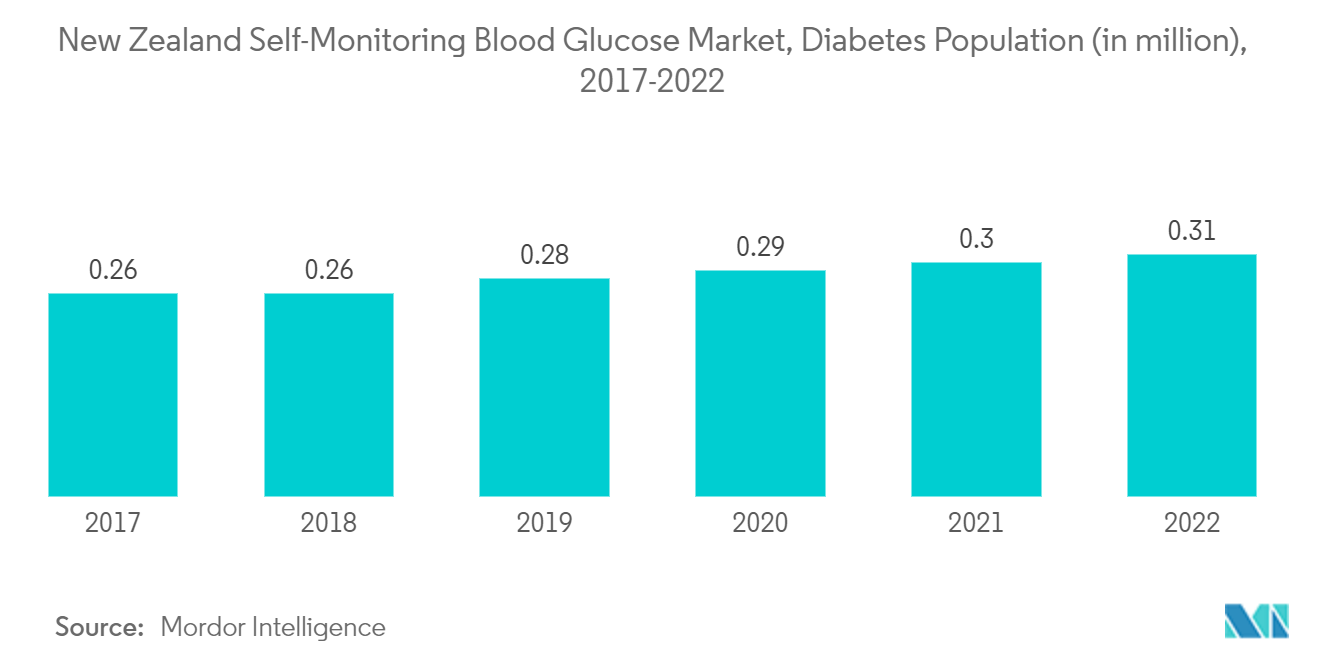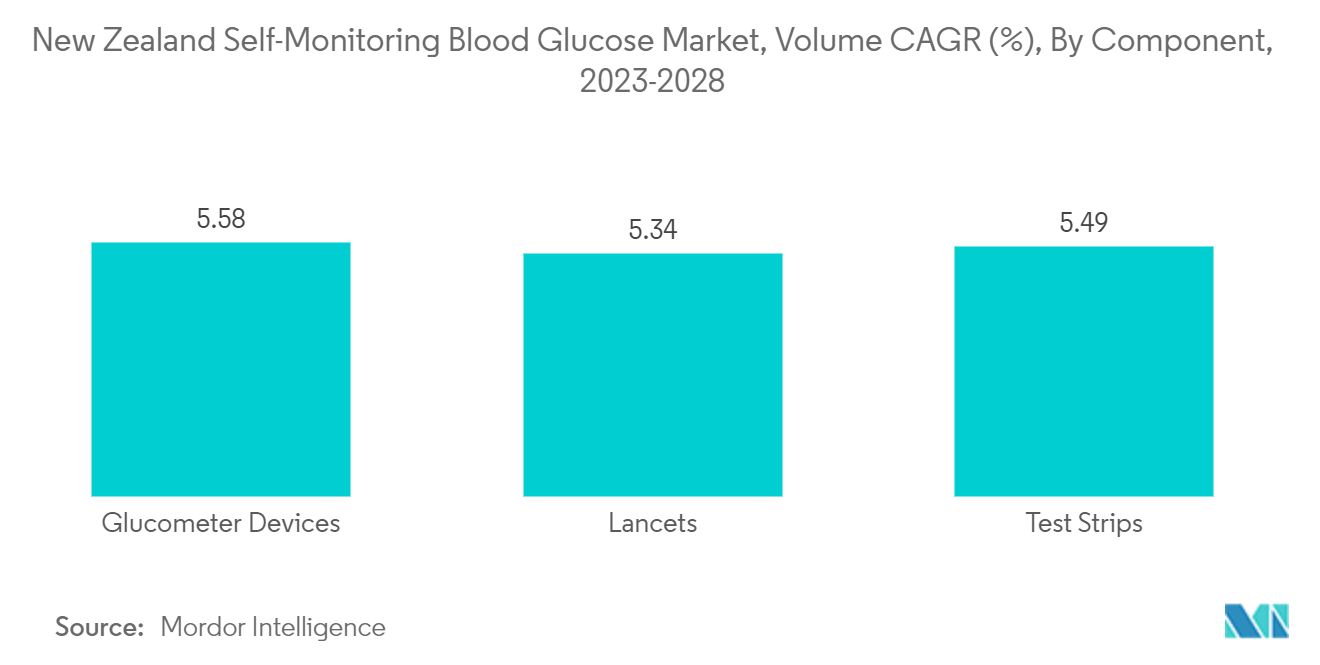Market Trends of New Zealand Self-Monitoring Blood Glucose Industry
Rising Diabetes Prevalence in New Zealand
During the forecast period, there is likely to be a big increase in the number of people with diabetes in New Zealand. By 2028, about 360,000 people are expected to have diabetes.
There is a double burden because Mori and Pasifika have higher rates and worse outcomes, and they also usually have more social and economic problems. Type 1 diabetes is strongly linked to a family history of the condition, but the exact cause is unknown. No changeable factors make it more likely to get type 1 diabetes, but living a healthy life is important for dealing with the symptoms and long-term problems that come with it. People are at a higher risk of getting type 2 diabetes. Major biomedical risk factors for type 2 diabetes are impaired fasting glucose and impaired glucose tolerance, high blood pressure, dyslipidemia, overweight and abdominal obesity, and behavioral risk factors including unhealthy diets, insufficient physical activity, and smoking.
According to the New Zealand Health Survey by the Ministry of Health, the prevalence of obesity in New Zealand adults was around 34% in 2021/22. Diabetes can lead to a lot of different problems, such as a stroke, kidney disease, nerve damage, hearing loss, high blood pressure, problems with the eyes, feet, skin, etc.Because of this, people with diabetes need to have their blood sugar levels checked all the time.The first step in treating diabetes is to lower blood sugar. People with diabetes need to be watched to make sure their blood sugar levels don't go above the normal range.
Self-monitoring is a commitment that many diabetic patients follow to manage their condition. The blood glucose levels help the patients and doctors modify their diet, lifestyle, insulin therapy, and medications to help their blood sugar return to normal. With newer innovations in medical technology, glucometers these days have highly sensitive strips and sensors that can detect every component of blood accurately, close to lab results.
Thus, the studied market is likely to grow during the analysis period because of the factors listed above and the rise in popularity.

The Test Strips Segment held the highest market share in the current year
The Test Strips Segment recorded a market share of about 70% in the current year.
Blood glucose test strips are small, disposable strips that are a key component of blood glucose testing. When blood is placed on the test strip, it reacts with a chemical called glucose oxidase, producing gluconic acid from the glucose in the blood. At the other end of the test strip, the meter transfers a current to the test strip. The test strip has electric terminals, which allow the meter to measure the current between the terminals. How much gluconic acid has been made affects the flow of electricity between the terminals.The blood glucose meter then uses an algorithm to work out the blood glucose level based on the difference in current.
The growth in market share of test strips is expected to be higher than that of glucose meters because of the difference in use-case frequency. The glucometer is a one-time purchase, but test strips are an ongoing cost because they need to be thrown away after each use.A typical glucose meter will last between six months and three years and will only cost you once during that time.
PHARMAC is the government agency that decides which medicines and related products are funded in Aotearoa New Zealand. PHARMAC funds CareSens N and CareSens PRO blood glucose test strips; SensoCard blood glucose test strips (for patients who are visually impaired); CareSens N, CareSens N POP, and CareSens N Premier blood glucose diagnostic test meters; the CareSens Dual blood glucose and blood ketone diagnostic test meter; and KetoSens blood ketone diagnostic test strips. Such initiatives are expected to drive the market over the forecast period.


